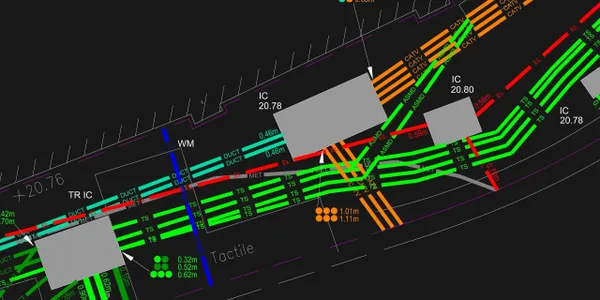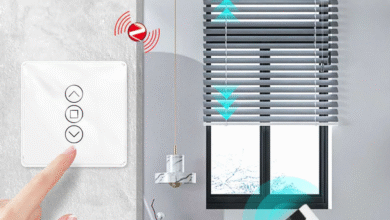GPR Surveyors London Explained: Services, Benefits, and What to Expect
Introduction to GPR Surveying in London
Ground Penetrating Radar (GPR) is a revolutionary technology used to explore what lies beneath the surface without disturbing the ground. In a bustling and historically rich city like London, where underground infrastructure and remnants from different eras coexist, GPR surveyors london play a crucial role. These experts use non-invasive methods to detect, identify, and map subsurface elements, helping homeowners, engineers, contractors, and developers avoid costly mistakes and delays.
Whether you’re breaking ground on a construction site, renovating a listed building, or planning utility rerouting, GPR surveyors in London offer unmatched insight and accuracy. Their work ensures safety, compliance, and efficiency in some of the most complex urban environments in the UK.
What Is GPR and How Does It Work?
Ground Penetrating Radar uses high-frequency electromagnetic waves to scan the subsurface. A GPR device transmits signals into the ground and records reflections that occur when the waves encounter different materials. These reflections are captured in real-time and used to create a visual representation of what lies below—everything from cables and pipes to voids, rocks, and even archaeological features.
The depth and clarity of GPR data depend on factors such as soil composition, moisture levels, and the frequency used. In London, where underground features may include old sewers, bomb shelters, and maze-like utility networks, the ability to interpret this data accurately is vital.
Services Offered by GPR Surveyors in London
Utility Mapping
One of the primary services provided by GPR surveyors in London is underground utility detection. They locate water mains, electricity cables, gas lines, telecom ducts, and drainage systems—many of which may be undocumented or inaccurately recorded on existing plans. This is essential for any excavation, construction, or renovation project to proceed safely.
Concrete Scanning
Before coring or cutting into slabs, it’s important to know what lies inside the concrete. GPR surveyors offer concrete scanning services to detect rebar, post-tension cables, voids, and embedded conduits. This service is crucial in high-rise buildings, bridges, tunnels, and basements.
Void Detection
GPR can identify underground voids and cavities that may not be visible at the surface. These include sinkholes, collapsed pipes, and old foundations, all of which could jeopardize structural integrity or worker safety.
Structural Assessment
GPR is also used in structural evaluations, particularly in heritage buildings or areas with unknown foundations. Surveyors can assess wall thickness, material consistency, and embedded reinforcements without invasive drilling.
Archaeological Surveys
In areas of historical importance, GPR is employed to locate buried artifacts and structural remains. This non-destructive method supports conservation efforts while helping developers comply with local planning laws.
As-Built Surveys
After construction, GPR surveyors can verify the placement of utilities and structural elements for accurate as-built records. This ensures that future maintenance and development work can proceed with reliable information.
Benefits of Hiring GPR Surveyors in London
Enhanced Safety
Safety is one of the biggest advantages of working with professional GPR surveyors. By accurately locating underground utilities and voids, they prevent accidents, injuries, and property damage. This is especially important in busy London areas where underground space is crowded with essential infrastructure.
Cost Savings
Avoiding utility strikes, unnecessary excavation, and structural damage can save thousands of pounds. GPR surveys minimize the guesswork and reduce the likelihood of costly project delays or repairs.
Time Efficiency
Quick and accurate data collection allows projects to progress without unnecessary downtime. GPR surveyors can work alongside other professionals to keep projects on track, delivering reports in formats compatible with CAD or BIM systems.
Regulatory Compliance
Many London boroughs require proof of underground utility detection and risk assessment before granting construction permits. Using GPR surveyors helps ensure compliance with health and safety legislation, including PAS 128 standards for underground utility detection.
Preservation of Heritage
London is rich in historical architecture and archaeological sites. GPR helps developers avoid damaging important heritage assets and ensures that legal obligations concerning protected structures and areas are met.
Environmental Friendliness
GPR is non-invasive and requires no drilling or excavation, making it environmentally friendly. It allows for thorough surveys with minimal disruption to the site and surrounding area.
What to Expect During a GPR Survey in London
Initial Consultation
The process begins with a consultation where the client explains their goals and provides site information. This includes existing maps, planning documents, and any known risks or obstacles. The surveyor assesses the project scope and recommends the appropriate survey methods.
Site Preparation
GPR surveys require a relatively clear and accessible surface. The survey team may request removal of heavy objects, debris, or furniture to ensure optimal scanning. Safety precautions are discussed, especially if the site is active or publicly accessible.
Data Collection
Using specialized GPR equipment, the surveyor scans the area in a methodical grid pattern. The device emits radar pulses and collects reflected signals, which are processed in real time. In some cases, surveys are conducted in tandem with other detection methods, such as electromagnetic locators or CCTV drainage inspections, to provide a more complete view.
Data Interpretation
The raw radar data is interpreted by trained professionals who understand how to distinguish between different materials, features, and anomalies. In London, this interpretation is especially critical due to the complexity of underground layers.
Report Delivery
Once the data is analyzed, the surveyor delivers a comprehensive report. This may include:
-
2D and 3D maps
-
Utility trace maps
-
Void and anomaly locations
-
CAD or BIM-compatible digital files
-
Recommendations for further investigation or mitigation
Clients can use these reports for planning, engineering, permitting, and ongoing construction tasks.
When Should You Hire GPR Surveyors in London?
Hiring a GPR surveyor is recommended in a variety of scenarios, such as:
-
Before digging, drilling, or breaking ground
-
When converting or extending existing buildings
-
When working on heritage-listed sites
-
Before purchasing land or property for development
-
When unexplained ground movement or subsidence occurs
-
For validating undocumented utility connections
-
During risk assessments or due diligence for investors and stakeholders
Choosing the Right GPR Surveyor in London
With so many firms offering GPR services, it’s important to choose a surveyor who is experienced, well-equipped, and familiar with London’s unique challenges. Look for professionals who:
-
Follow PAS 128 or BSI standards
-
Use advanced GPR equipment with multiple frequency ranges
-
Provide clear, timely reports
-
Have experience in your sector (construction, utilities, heritage, etc.)
-
Offer insurance and health & safety documentation
-
Have local knowledge of London’s underground conditions
Client testimonials, case studies, and industry affiliations can also help verify a surveyor’s reputation and reliability.
GPR and the Future of Urban Development in London
As London continues to grow, underground space becomes more valuable and complex. GPR surveyors are now essential players in urban planning and development, helping to unlock safe, smart infrastructure that supports the city’s future. From smart city installations to major transport expansions, GPR data is central to efficient, safe, and sustainable urban growth.
Final Thoughts
GPR surveyors in London offer more than just a service—they provide clarity in a world where what’s hidden below the surface can have enormous consequences. With their expertise and advanced technology, they empower developers, engineers, architects, and property owners to move forward with confidence. Whether you’re planning a high-rise or preserving a piece of London’s history, working with a skilled GPR surveyor ensures your project is grounded in knowledge, precision, and safety.





